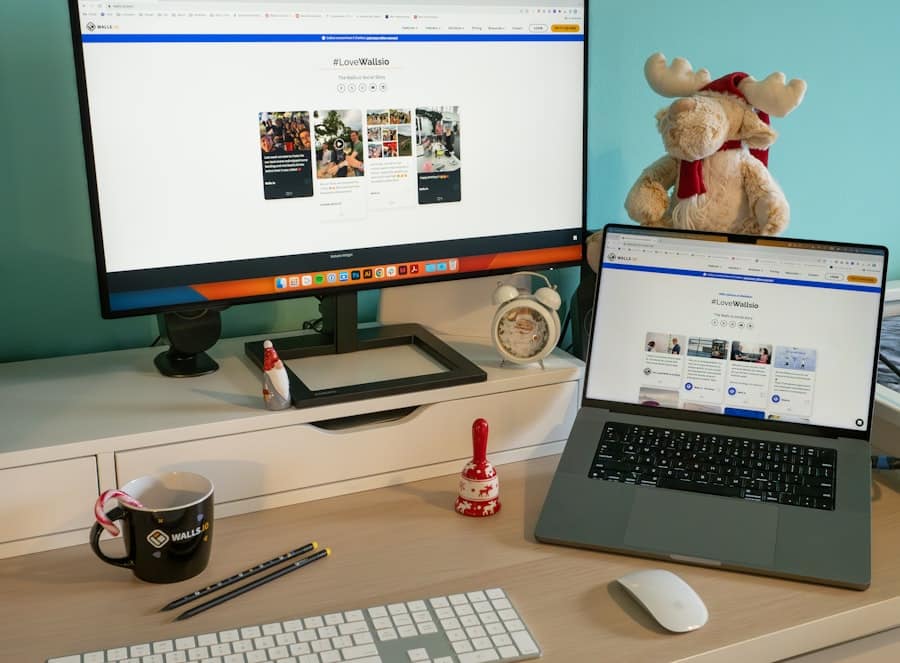Crowd-sourced game design refers to the collaborative process of creating video games by leveraging the input, creativity, and resources of a large group of individuals, often through online platforms. This approach allows developers to tap into a diverse pool of ideas and talents, enabling them to create games that resonate more deeply with players. Unlike traditional game development, which typically involves a closed team of designers and developers, crowd-sourced game design opens the door for contributions from anyone interested in participating, whether they are seasoned professionals or enthusiastic amateurs.
The concept of crowd-sourcing in game design can take many forms, from soliciting feedback on game mechanics to inviting players to contribute artwork or storylines. Platforms like Kickstarter and Indiegogo have popularized this model by allowing developers to fund their projects through pre-orders and donations from the community. This not only provides financial backing but also fosters a sense of ownership among players, who feel invested in the game’s success.
As a result, crowd-sourced game design has emerged as a powerful tool for innovation, enabling developers to create unique gaming experiences that reflect the desires and preferences of their audience.
Key Takeaways
- Crowd-sourced game design involves harnessing the creativity and input of a large group of people to collaboratively design and develop a game.
- The benefits of crowd-sourced game design include increased creativity, diversity of ideas, and community engagement, leading to more innovative and inclusive games.
- Examples of successful crowd-sourced game design include Minecraft, where players can create and share their own custom content, and the game “Foldit,” which uses crowd-sourcing to solve complex scientific problems.
- Crowd-sourced game design engages communities by allowing players to contribute their ideas, feedback, and creativity, fostering a sense of ownership and connection to the game.
- Community feedback plays a crucial role in crowd-sourced game design, as it helps developers understand player preferences, identify issues, and make informed design decisions.
The Benefits of Crowd-Sourced Game Design
Unlocking Creative Potential
One of the most significant advantages of crowd-sourced game design is the ability to harness a wide array of perspectives and ideas. By involving a diverse group of contributors, developers can access a wealth of creativity that may not be present within a traditional development team. This influx of ideas can lead to innovative gameplay mechanics, compelling narratives, and unique art styles that might otherwise go unexplored.
Enhancing Game Quality and Community
When players are given the opportunity to share their thoughts on game features or story arcs, they often provide insights that can enhance the overall quality of the game. Additionally, crowd-sourced game design fosters a strong sense of community among players and developers. When individuals feel that their contributions are valued and have a tangible impact on the final product, they are more likely to become loyal supporters of the game.
Building a Dedicated Fan Base
This sense of belonging can lead to increased engagement and enthusiasm for the project, as players rally around a shared vision. Furthermore, this community-driven approach can help build a dedicated fan base even before the game is released, creating a built-in audience that is eager to promote and support the game upon its launch.
Examples of Successful Crowd-Sourced Game Design

Several notable games have successfully utilized crowd-sourced design principles to create engaging and innovative experiences. One prominent example is “Broken Age,” a point-and-click adventure game developed by Double Fine Productions. The project was funded through Kickstarter in 2012, where it raised over $3 million from backers who were eager to see the return of classic adventure gaming.
Throughout its development, Double Fine actively engaged with backers by providing updates, soliciting feedback, and even incorporating player suggestions into the game’s design. The result was a critically acclaimed title that resonated with both nostalgic fans and new players alike. Another example is “Shovel Knight,” developed by Yacht Club Games.
This retro-inspired platformer was initially funded through Kickstarter, where it garnered significant attention for its charming art style and gameplay mechanics. The developers maintained an open line of communication with backers throughout the development process, sharing progress updates and incorporating player feedback into the game’s design. The success of “Shovel Knight” not only led to multiple expansions and spin-offs but also established Yacht Club Games as a respected name in the indie gaming community.
How Crowd-Sourced Game Design Engages Communities
Crowd-sourced game design inherently promotes community engagement by inviting players to participate in the creative process. This involvement can take many forms, from voting on design elements to contributing original content such as artwork or music. By allowing players to have a say in the development of a game, developers create an environment where individuals feel empowered and valued.
This sense of agency fosters deeper connections between players and the game itself, as they see their contributions reflected in the final product. Moreover, crowd-sourced design often leads to the formation of vibrant online communities where players can share their ideas, discuss gameplay mechanics, and collaborate on projects. Platforms like Discord and Reddit have become popular spaces for these discussions, allowing fans to connect with one another and with developers directly.
As these communities grow, they can become self-sustaining ecosystems that continue to support and promote the game long after its initial release.
The Role of Community Feedback in Crowd-Sourced Game Design
Community feedback plays a crucial role in shaping the direction of crowd-sourced game design projects. Developers often rely on player input to refine gameplay mechanics, balance difficulty levels, and enhance storytelling elements. By actively seeking feedback through surveys, beta testing phases, or public forums, developers can gain valuable insights into what resonates with their audience.
This iterative process allows for continuous improvement and adaptation based on real-time player experiences. For instance, during the development of “No Man’s Sky,” Hello Games faced significant criticism regarding the game’s initial release.
This dedication to listening to their audience ultimately transformed “No Man’s Sky” into a beloved title with a thriving player base. Such examples illustrate how community feedback can not only enhance gameplay but also help developers build trust and credibility within their audience.
Challenges and Limitations of Crowd-Sourced Game Design

Despite its many advantages, crowd-sourced game design is not without its challenges and limitations. One significant hurdle is managing the diverse opinions and expectations of contributors. With so many voices involved in the process, it can be difficult for developers to discern which feedback is most valuable or relevant to their vision for the game.
Striking a balance between incorporating player suggestions and maintaining creative control can be a delicate task that requires careful navigation. Additionally, there is the risk of scope creep when engaging with a large community. As players contribute ideas and suggestions, developers may find themselves overwhelmed by an influx of content that could lead to an ever-expanding project scope.
This can result in delays or even project cancellations if not managed effectively. Developers must establish clear guidelines for contributions and maintain open communication with their community to ensure that the project remains focused and achievable.
Tips for Implementing Crowd-Sourced Game Design
To successfully implement crowd-sourced game design, developers should consider several key strategies. First and foremost, establishing clear communication channels is essential for fostering collaboration between developers and players. Utilizing platforms like Discord or dedicated forums allows for real-time discussions where players can share their ideas and feedback while developers can provide updates on project progress.
Another important tip is to set specific goals for community involvement. By defining what aspects of the game will be open for player input—such as character design, story elements, or gameplay mechanics—developers can streamline the feedback process and ensure that contributions align with their vision. Additionally, providing regular updates on how community feedback has influenced development can reinforce players’ sense of ownership over the project.
Finally, it is crucial for developers to remain adaptable throughout the process. While it is important to have a clear vision for the game, being open to new ideas and willing to pivot based on player feedback can lead to unexpected innovations that enhance the final product.
The Future of Crowd-Sourced Game Design
As technology continues to evolve, so too will the landscape of crowd-sourced game design. The rise of blockchain technology and decentralized platforms may offer new avenues for funding and collaboration in game development. These innovations could enable developers to create more transparent systems for managing contributions while ensuring that all participants are fairly compensated for their work.
Moreover, advancements in artificial intelligence could facilitate more sophisticated methods for analyzing community feedback. By utilizing AI-driven tools to sift through player suggestions and identify trends or common themes, developers may be able to make more informed decisions about which ideas to incorporate into their games. Ultimately, as gaming becomes increasingly interconnected through online communities and social media platforms, crowd-sourced game design is likely to play an even more prominent role in shaping the future of interactive entertainment.
By embracing collaboration and valuing player input, developers can create richer gaming experiences that resonate with audiences around the world.
In a similar vein to crowd-sourced game design, NeuronWriter offers a platform for collaborative content creation and SEO optimization. This tool allows communities to work together to create engaging and optimized content, much like how game design communities come together to create innovative and entertaining games. To learn more about how NeuronWriter can benefit your content creation process, check out this article.
FAQs
What is crowd-sourced game design?
Crowd-sourced game design is a process in which game developers involve the gaming community in the creation and development of a game. This can include gathering ideas, feedback, and contributions from the community to shape the game’s design and features.
How does crowd-sourced game design engage communities?
Crowd-sourced game design engages communities by allowing them to have a direct impact on the games they play. It gives players a sense of ownership and involvement in the development process, leading to increased engagement and investment in the game.
What are the benefits of crowd-sourced game design?
Some benefits of crowd-sourced game design include tapping into the creativity and expertise of the gaming community, creating a sense of community and collaboration, and increasing player satisfaction by incorporating their ideas and feedback into the game.
What are some examples of crowd-sourced game design in action?
Examples of crowd-sourced game design include games that allow players to submit and vote on new features or content, games that have open development processes with regular community feedback, and games that involve the community in testing and bug reporting.

